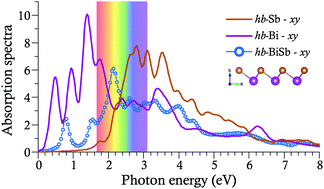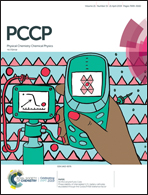Structure dependent optoelectronic properties of monolayer antimonene, bismuthene and their binary compound
Abstract
Two-dimensional (2D) antimonene, bismuthene, and their binary compound 2D BiSb possess high spin–orbit coupling (SOC) and potential topological insulator properties upon engineering their structural and chemical properties. Based on many-body first-principles calculations, we show that these materials can exhibit isotropic or anisotropic optoelectronic properties depending on their geometry, i.e. buckled (hb) or asymmetrical washboard (aw) phases. SOC significantly alters their optoelectronic properties, which is predominantly evident in 2D bismuthene. hb-antimonene absorbs light in the visible and partially in the ultraviolet regimes, while the absorption band edge for aw-antimonene, hb- and aw-bismuthene is set at the infrared region, absorption being spread as a broadband optical response through the spectral range. An exciton binding with 0.18 eV energy is detected for hb-bismuthene. Due to their broadband optical response, antimonene, bismuthene, and their binary compound offer possibilities towards applications as 2D materials in solar cells, light-emitting devices, photodetectors and light modulation.



 Please wait while we load your content...
Please wait while we load your content...